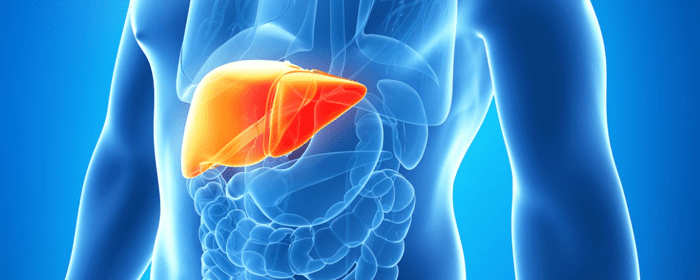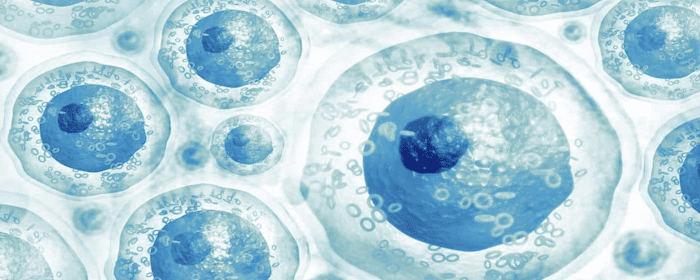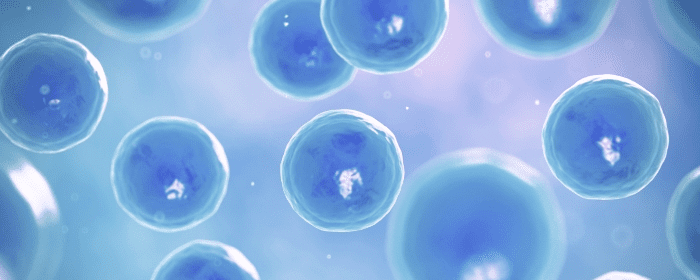
by admin | Oct 4, 2023 | Mesenchymal Stem Cells, Stem Cell Research, Stem Cell Therapy
Ankylosing spondylitis (AS) is a chronic and progressive inflammatory disease that primarily affects the sacroiliac joints and the spine; in rare cases, AS can also cause issues for the peripheral joints and extra-articular organs, including the skin, eyes, and cardiovascular system.
While there are a number of drugs prescribed to treat symptoms associated with AS, there is currently not a cure for AS nor is there a non-pharmaceutical method for treating the condition and its symptoms.
Considering the potent immune-modulated activity and their ability to inhibit B cell differentiation, T cell activation, and proliferation, researchers have increasingly been exploring the use of mesenchymal stem cells (MSCs) as a potential treatment option for a number of autoimmune diseases.
In this current study, Li et al. evaluated the therapeutic effects of umbilical cord MSC (uMSC) transplantation in patients with AS. This review summarizes the authors’ findings.
Specifically, Li et al.’s study evaluated 5 patients with AS after receiving intravenous transfusions of uMSCs.
After receiving an intravenous uMSC transfusion, the authors reported lower levels of inflammation, slowed progression of AS, and reduced levels of ESR, CRP, and other specific markers indicative of improved spinal functions and spinal movement in subjects with AS.
Considering these findings, the authors conclude that uMSC transplantation is feasible and safe and induces limited side effects.
The authors of this study also highlight a number of limitations, including the low number of patients, limited statistical analysis, and lack of a control group that did not receive an infusion.
In light of these results, Li et al. call for future studies using a larger cohort of patients with AS to enable the systematic evaluation of uMSC in treating symptoms of AS.
Source: “Infusion of umbilical cord mesenchymal stem cells alleviates … – NCBI.” 27 Jun. 2017, https://www.ncbi.nlm.nih.gov/pmc/articles/PMC5526206/.

by admin | Sep 27, 2023 | Mesenchymal Stem Cells, Stem Cell Research, Stem Cell Therapy, Wharton's Jelly
Mesenchymal stem/stromal cells (MSCs) continue to be viewed as a source of cell therapy applications due to their immunomodulatory and anti-inflammatory effects and because of their ability to stimulate angiogenesis. In MSCs, these benefits are mainly attributed to the secretion of factors.
Despite MSCs’ known and favorable proliferation levels, multipotency, and immune response regulation, there are other important variables that should be considered when developing cell therapy applications, including the source of MSCs.
Considering that MSCs collected from different tissues can form heterogeneous cellular populations and manifest tissue-specific functional differences, the source of MSCs should be of primary consideration when developing new therapeutic approaches.
In this review, Paladino et al. present a review of recent research related to the therapeutic application of Wharton’s jelly MSC (WJ-MSC) harvested from umbilical cords and how these cells affect immune responses in comparison with other sources of MSCs.
Bone marrow-derived stem cells BM-MSCs have long been considered the favored source of MSCs and are the most used source of MSCs in clinical research. However, BM-MSCs have a history of showing mixed results and are not always recommended for use due to the invasive and painful process used to obtain the MSCs.
While other alternative sources, including adipose tissue, dental pulp, and menstrual blood, are available, WJ-MSCs are considered an easily accessible source of MSCs that are comparable to BM-MSC and have suffered less environmental interference and demonstrate higher proliferative capacity than other sources.
One of the most promising benefits associated with MSC therapy is the potential to treat inflammatory or autoimmune diseases, including systemic lupus erythematosus, type 1 diabetes, and multiple sclerosis.
Studies using WJ-MSC in this capacity have shown their robust immunomodulatory potential. Specifically, the authors of this review reference a number of studies using various sources of MSCs, including WJ-MSCs that demonstrate immunomodulatory potential similar to other MSC sources. Studies also demonstrate that WJ-MSC is a better suppressor of specific inflammatory factors, including mixed lymphocyte reaction, and possesses higher levels of IL-17A (a key mediator in the treatment of graft-versus-host disease) than MSCs collected from other sources.
Paladino et al. conclude that the available literature indicates that WJ-MSCs possess immunological features comparable to MSCs from other sources, including bone marrow-derived MSCs. The authors also call for further study to identify the best therapeutic indications for WJ-MSCs as a substitute for other sources of MSC, including BM-MSC.
Source: “The Immunomodulatory Potential of Wharton’s Jelly Mesenchymal ….” 11 Jun. 2019, https://www.hindawi.com/journals/sci/2019/3548917/.

by admin | Sep 13, 2023 | Mesenchymal Stem Cells, Regenerative Medicine, Stem Cell Research, Stem Cell Therapy
Liver disease accounts for nearly two million deaths annually and is responsible for 4% of all deaths (1 out of every 25 deaths worldwide); approximately two-thirds of all liver-related deaths occur in men.
Most forms of chronic liver disease result from viral infections, alcohol abuse, or metabolic disorders and eventually result in cirrhosis and liver failure. The only effective treatment for end-stage cirrhosis is liver transplantation. Unfortunately, considering organ shortages and the high cost associated with this type of medical procedure, liver transplants are not available in many countries.
Stem cell transplantation, specifically transplantation using mesenchymal stem cells (MSCs), has been increasingly used as a potential treatment strategy for a host of diseases, including for treating chronic liver disease.
As part of this review, Kang et al. discuss the therapeutic effects of MSCs in liver diseases to address questions regarding their efficacy and safety, evaluate recent advances in this area, and consider the potential risks and challenges in the use of MSC-based therapies for liver disease.
When considering the therapeutic effects of MSC therapy in chronic liver disease, the authors conclude that this treatment has shown to be effective, primarily due to their immunomodulation, differentiation, and antifibrotic properties exhibited by MSCs. The authors also point out that although the safety and therapeutic effects of MSC therapy have been observed in several clinical studies, to date the therapy has demonstrated only modest improvements in treating liver disease. Kang et al. attribute this modest improvement, in part, to the current limited feasibility of transplanted cells.
The authors provide a detailed review of the strategies that have been utilized to improve the effects of MSC transplantation, including tissue engineering, preconditioning, genetic engineering, and using extracellular vesicles as cell-free therapy, and summarize the future potential of each of these as ways to improve MSC transplantation.
Kang et al. also highlight several problems that must be considered and addressed before MSCs are fully accepted as clinical therapeutic treatment options for chronic liver disease; these problems include the potential for carcinogenesis and viral transmission. For example, previous animal studies have demonstrated a relationship between the development of sarcoma and the number of passages. While this has not been directly observed in clinical trials involving human MSCs, the follow-up period was too short to allow for observed evidence of this development. As a result, the authors call for a detailed study into the chromosomal integrity before MSC transplantation to ensure the safety of the procedure.
In addition to the potential for tumor cell growth, allotransplantation of MSC cells may involve the risk of viral transmission to the patients. As a result, the authors indicate that both MSC recipients and donors may need to be screened for the presence of specific viruses, including parvovirus B19, herpes simplex virus, and cytomegalovirus.
The authors conclude that the prospects of MSC-based cell therapy for treating chronic liver disease will be determined by standardizing the cell source, culture conditions, administration route, and the outcomes of future large-scale clinical trials.
Source: “Mesenchymal Stem Cells for the Treatment of Liver Disease – NCBI.” https://www.ncbi.nlm.nih.gov/pmc/articles/PMC7234888/.

by admin | Sep 6, 2023 | Multiple Sclerosis, Mesenchymal Stem Cells, Regenerative Medicine, Stem Cell Research, Stem Cell Therapy
Multiple sclerosis (MS) is a progressive auto-immune disease that affects the central nervous system (CNS). Currently, it is estimated that nearly 2 million people worldwide are affected by MS.
Characterized by the body attacking the myelin (the protective sheath that covers the nerve fibers), MS causes communication issues between the brain and the rest of the body. As the nerves continue to deteriorate, the condition can cause permanent damage.
Currently, there is no pharmaceutical treatment for MS, only medications that treat the symptoms of the condition.
In the field of regenerative medicine, mesenchymal stem cells (MSCs) have emerged as a candidate that could potentially treat a number of diseases, including MS. Specifically, MSCs have anti-inflammatory effects and have demonstrated the ability to differentiate in order to target the overactivity and self-antigen attacks observed in the development and progression of MS.
As part of this review, Alanazi et al. reviewed a number of clinical trials that have utilized MSCs isolated from a variety of sources, including peripheral blood, bone marrow (BM-MSCs), adipose tissue (AD-MSCs), umbilical cord (UCMSCs), and the placenta, in order to better understand their potential as a treatment option for MS.
An analysis of these clinical trials led the authors of this review to the consensus that MSCs appear effective in inhibiting CD4+ and CD8+ T cell activation, T regulatory cells, and macrophage switch into the auto-immune phenotype.
Further analysis of the specific MSCs used to treat MS by Alanazi et al. indicates that while BM-MSCs, AD-MSCs, and UCMSCs all demonstrate beneficial effects when applied to the treatment of MS, UCMSCs appear to be the best option.
According to the authors, UCMSCs demonstrate faster self-renewal than other MSCs, are able to differentiate into three germ layers, and can accumulate in damaged tissue or inflamed areas. Additionally, UCMSCs are also among the easiest MSCs to source, demonstrate a high concentration of MSCs, are safe and inexpensive, and are not associated with ethical issues.
Based on the information reviewed, Alanazi et al. recommend emphasizing the clinical utility of UCMSCs for regenerative medicine and immunotherapy, including for the treatment of MS.
Source: “Mesenchymal stem cell therapy: A review of clinical trials for multiple ….” 23 Aug. 2022, https://www.ncbi.nlm.nih.gov/pmc/articles/PMC9420954/.

by admin | Aug 9, 2023 | Mesenchymal Stem Cells, Stem Cell Therapy, Wharton's Jelly
Human umbilical cord Wharton’s Jelly derived mesenchymal stem cells (WJ-MSCs) are reported as the most potent cell source of MSCs, however, they remain understudied in comparison to other autologous sources of MSCs.
Mehling et al.’s study aimed to evaluate the safety of WJ-MSC therapy for a range of conditions and administration routines, including intravenous, intrathecal, and intra-articular delivery.
Wharton’s jelly (WJ) is the mucoid connective tissue that surrounds the vessels in the human umbilical cord and provides protection from compression and torsion in response to fetal movement.
According to this study, the use of WJ-MSCs has many advantages over autologous MSCs, including circumventing the pain and healing process of invasive stem cell harvesting from a patient. Additionally, WJ-MSCs offer the highest level of potency for therapeutic benefit and exhibit increased proliferation ability and anti-inflammatory effects.
Additionally, WJ-MSCs have been demonstrated to be safe and effective for many conditions. WJ-MSCs also do not cause or contribute to infusion-related toxicity, treatment-related adverse events, or ectopic tissue formation, even when administered at high dosages.
In this study, Mehling et al. confirm the safety of human allogeneic WJ-MSCs delivered at high doses and through multiple delivery routes (including intravenous (IV), intrathecal (IT), and Intraarticular (IA)).
Specifically, as part of this study, 22 subjects were evaluated for adverse events (AEs) for a period of 6 months following treatments with WJ-MSCs for a range of conditions, including neurological and osteoarthritic indications.
At the conclusion of the 6-month period of evaluation, the study reported an AE rate of 9.3% (3 subjects from the 32 doses administered in this study). The reported AEs consisted of chills and headaches, both transient and mild, and resolving without concern. While both of these AEs (headache and chills) are relatively common reactions to cell administration, 1 of the 3 AEs was deemed related to the administration procedure.
Additionally, blood profiling of 75 markers for health and disease in the subjects of this study demonstrated that WJ-MSC treatment poses no hematological safety concerns.
Considering the minimal occurrences of AEs observed following WJ-MSC therapy administered during this study, the authors support the use of WJ-MSC therapy for various indications in future clinical studies.
Source: “Safety study of cultured human Wharton’s Jelly mesenchymal stem ….” https://www.cellr4.org/wp-content/uploads/sites/2/2022/10/e3332.pdf.

by admin | Aug 2, 2023 | Mesenchymal Stem Cells, Regenerative Medicine, Stem Cell Therapy
Because of its ability to simultaneously activate multiple mechanisms, including paracrine, trophic, immunomodulatory, and differentiation, researchers consider mesenchymal stem cells to be an effective option for stem cell therapy.
After years of active research, bone marrow-derived MSCs (BM-MSCs) have been a prevalent source for MSC-based studies. There is also active research using MSCs from a variety of other sources, including adipose tissue, peripheral and umbilical cord blood, amniotic fluid, skin, dental pulp, synovium, umbilical cord tissue, placental complex, and endometrium.
As part of this review, Arutyunyan et al. review umbilical cord-derived MSCs (UC-MSCs) as a prospective source for MSC-based therapy. More specifically, the authors focus on the potential therapeutic benefits of Wharton’s jelly, the gelatinous substance found in the umbilical cord stroma; of particular interest to researchers is the presence of mesenchymal-derived cells, including stem cells, with the absence of capillaries.
When studied in vitro, researchers found UC-MSCs demonstrated the ability to differentiate into a wide range of cells, including chondrocytes, adipocytes, osteoblasts, odontoblast-like cells, dermal fibroblasts, smooth muscle cells, and somatostatin-producing cells, sweat gland cells, endothelial cells, neuroglia cells, and dopaminergic neurons.
While it’s well known that MSCs produce a variety of bioactive compounds that supply a paracrine mechanism for their therapeutic activity, researchers have learned that UC-MSCs secretomes differ significantly from MSCs from bone marrow and adipose. Specifically, the most significant difference is UC-MSCs’ nearly complete absence of synthesis of the main proangiogenic factor, VEGF-A. UC-MSCs also demonstrate increased production of antiangiogenic factors when compared to BM-MSCs and AT-MSCs.
UC-MSCs have recently demonstrated the ability to transfer their own mitochondria into mitochondrial DNA-depleted cells. This observation has broad implications for the therapeutic potential of UC-MSCs, primarily due to the failure of mitochondria as an initial event in many diseases. In this regard, the authors conclude that the transfer of mitochondria provides a rationale for the therapeutic use of UC-MSCs for ischemic injury or disease linked to mitochondrial dysfunction.
Arutyunyan et al. found recent animal model preclinical studies regarding the use of UC-MSCs for the treatment of different diseases demonstrated promising results. Additionally, clinical studies involving UC-MSCs demonstrated to be safe with no significant side effects other than fever.
While the authors point out concern with the lack of standardized protocols for the isolation and expansion of UC-MSCs and of uniform requirements for the final product. Despite these concerns, the authors also conclude that the results of clinical trials using UC-MSCs are encouraging, particularly for the treatment of autoimmune and endocrine diseases.
Source: “Umbilical Cord as Prospective Source for Mesenchymal Stem Cell ….” 29 Aug. 2016, https://www.hindawi.com/journals/sci/2016/6901286/.







 St. Petersburg, Florida
St. Petersburg, Florida
